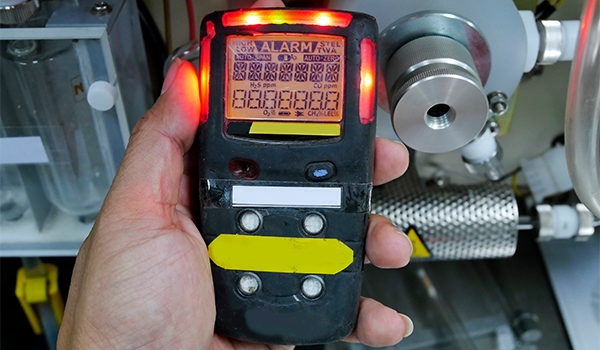A gas sensor is a sensor that detects a specific gas. Historically, canaries were used to detect the generation of toxic gases that could not be detected by humans. However, this has been replaced with the advent of gas sensors, which are now used to detect specific gases to improve the environment and maintain health.
This section presents the features of gas sensors and examples of their applications.
Gas sensors are sensors that can detect a wide range of gases, not just harmful gases. The types of gas sensors include semiconductor, infrared, and contact combustion types.
This sensor detects gas concentrations based on the change in resistance value that occurs when a metal oxide semiconductor comes into contact with the gas to be detected. It is capable of detecting concentration changes even in low ppb ranges and has excellent long-term stability.
This sensor detects the type of gas by using the difference in wavelength absorbed by a sample gas when infrared radiation is emitted. It has high gas selectivity, and the sensitivity does not fluctuate even with high concentrations or prolonged exposure.
This sensor converts the electrode reaction of the gas into an electrical signal and converts this into an amount of current to detect the gas concentration. It is used in situations where human lives are at stake due to its high gas detection accuracy, reproducibility, and stability.
In this sensor, the temperature rise due to contact combustion between the element and gas is detected as a change in electrical resistance for measuring the gas concentration. It has a compact and power-saving design and can measure almost all combustible gases.
Contact Us
Gas sensors using MEMS enable compact designs and are easy to mass produce, making it possible to use the sensor in products where it was previously difficult to mount for creating a variety of added value.
Contact Us
Gas sensors are used in an extremely wide range of applications, including industrial equipment, environmental equipment, medical equipment, and automotive components.
- Industrial equipment
- Detection of toxic gases such as carbon monoxide and combustible gases that could threaten human safety
- Environmental equipment
- Monitoring of air quality including nitrogen oxides at observation sites
- Medical equipment
- Gas detection for safe medical gas operation
- Automotive components
- Used in checks on the amount and state of exhaust gases, driver sobriety tests, etc.
Recently, installation of CO2 sensors has been recommended for COVID-19 protective measures, measuring concentrations using filters that select specific gases, and checking the health of people with illnesses and other health conditions.
Contact Us

